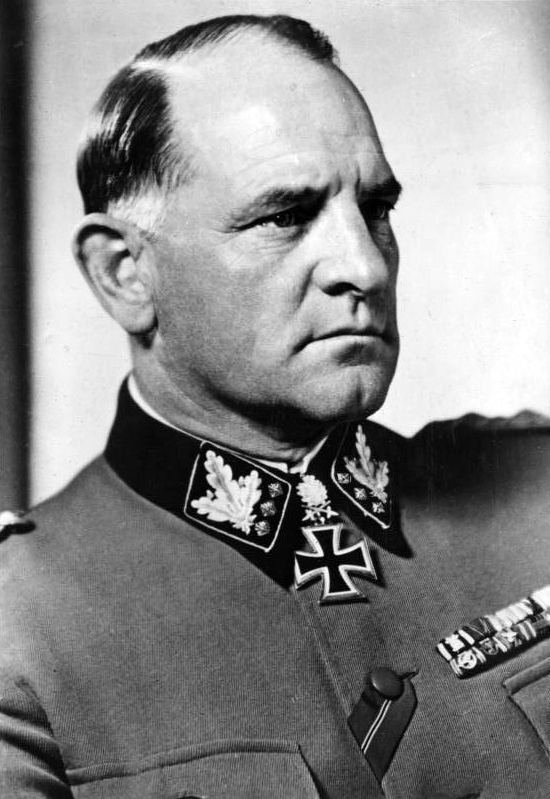 | ||
SS-Oberst-Gruppenführer was (from 1942 to 1945) the highest commissioned rank in the Schutzstaffel (SS), with the exception of Reichsführer-SS, held by SS commander Heinrich Himmler. The rank is translated as "Supreme group leader" and alternatively translated as "colonel group leader". Correctly the rank was spelled Oberst-Gruppenführer to avoid confusion with Obergruppenführer, which was junior to it.
Contents
Overview
Oberst-Gruppenführer was considered the equivalent of a colonel general (Generaloberst) in the Wehrmacht, which is generally seen as the equivalent of a four-star general or army general in other armed forces.
The rank was first proposed in early 1942 as a possible future rank for Waffen-SS commanders who might be promoted to command Army Groups. The Heer leadership immediately opposed the creation of an SS-Colonel General rank, since army commanders felt that no SS general should hold such a large amount of authority and that SS combat commands should be restricted to the Corps and Division level. The idea of SS Armies and Army Groups was something few wished to see develop – two SS Armies would eventually be established, (the 6th and the 11th SS Armies). No SS Army Groups were ever created.
Promotion history
In April 1942, on Adolf Hitler's personal authority, the rank of SS-Oberst-Gruppenführer was at last bestowed but only within the Allgemeine SS. The very first appointment was to Nazi Party treasurer and RZM chief Franz Xaver Schwarz. On the same day orders were issued for a dual promotion within the Ordnungspolizei, making Kurt Daluege a Generaloberst der Polizei at the same time. Daluege's rank was the only police promotion to this rank.
The last two of the four Oberst-Gruppenführer promotions were made in 1944, this time to Waffen-SS generals. Dietrich's date of rank was back-dated to 1942, making him the most senior officer of the Waffen-SS. The final seniority list was as follows:
Franz Xaver Schwarz, who held Ehrenführer (honorary) rank, was the only holder of the rank who was not granted equivalent police or Waffen-SS rank. The Oberst-Gruppenführer rank was worn on the field-grey Waffen-SS tunic, the grey SS service tunic, or in Daluege's case the German police uniform. There are no photographic records of the insignia ever being worn on the black ceremonial uniform, which had largely fallen into disuse by the time the rank was created.
In 1944, Himmler offered to appoint Albert Speer to the honorary rank of Oberst-Gruppenführer. Speer declined, not wishing to formally be subordinate to Himmler. Himmler's successor, Karl Hanke, never held the rank of Oberst-Gruppenführer, but was appointed Reichsführer-SS from the lower grade of Obergruppenführer. Karl Wolff claimed to have been promoted to the rank in April 1945 by personal decree of Adolf Hitler; Wolff's claim is not supported by either documentary or photographic evidence, leading most history texts to list his final rank as Obergruppenführer.
